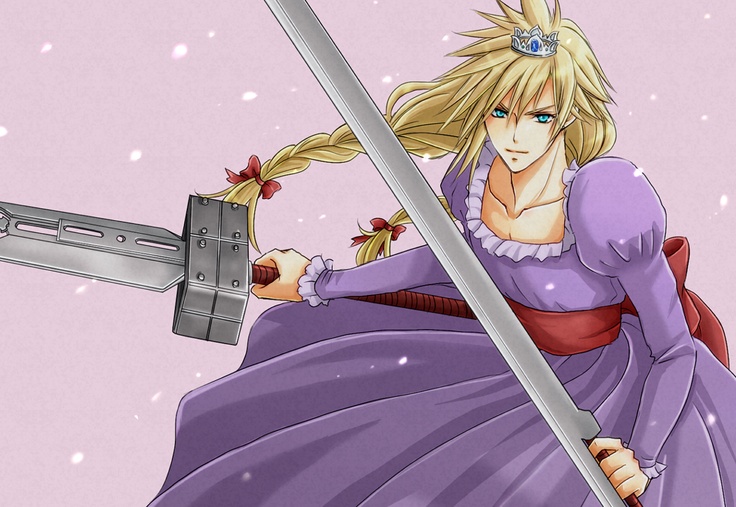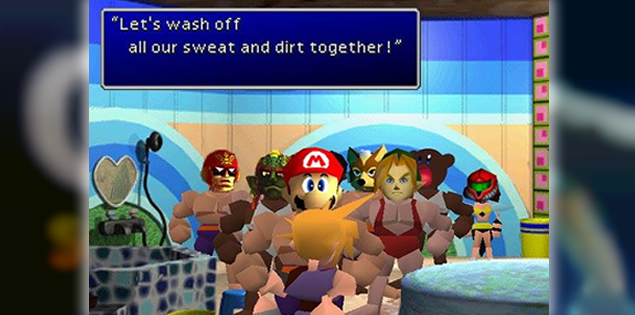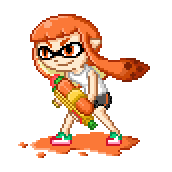Cloud for Sm4sh. Cloud Strife, hired hitman for a familiarly named eco-terrorist group and former SOLDIER Cloud Strife, in all of his glorious chocobo-haired goodness has been confirmed for Super Smash Bros. for Wii U and 3DS. But if you’ve been on the Internet at all in the last 48 hours, you already knew that.
You may even have rolled your eyes and groaned at the reveal because you’re tired of hearing about Final Fantasy VII and may even think it’s one of the most over-hyped games of all time (just under Ocarina of Time). What you may not realize is that having Cloud in Smash Bros. is a symbolically significant moment in gaming history that could finally bring closure to one of the biggest corporate fights of the 90s. Many of you already know this story, but here’s a refresher on exactly why this particular roster addition is so important to Nintendo players.
Let’s take a trip back, circa 1995, into Nintendoland (no, not the game/park). Final Fantasy ‘III’ (VI to the well-informed, and referred to as such from here on out) had found a nice audience around the world, drawing more crowds to the franchise and RPGs than ever before with its approachable and fast-paced story, colorful cast of well-explored characters, mature themes, and beautiful music. To many, Final Fantasy VI was an early example of video games as a viable storytelling medium and proof that you could tell an emotional story with just 16 bits of power. With Chrono Trigger about to broaden the audience and the then-niche genre even further, the creative team behind Squaresoft’s saving grace was under a lot of pressure to push the bar once again. Work began on the next installment right there on the Super Nintendo and soon enough, work moved on to next generation Silicon Graphics hardware, which would ultimately be the basis of Nintendo’s next console, but allow them to effectively program for any hardware in the future.
The result of this experimenting with new hardware was an interactive demo shown at SIGGRAPH in August 1995, showing characters from VI in a battle scenario with a golem, based on CG graphics. The entire thing worked in real-time and showed an idea of what the RPG might look like in the transition from 2D to 3D game design. This model ended up being the basis for Final Fantasy VII’s design and the same hardware would be used to render full-motion videos in the game as well. And that’s where problems started to occur.
“When we discussed designing the field scenes as illustrations or CG based, we came up with the idea to eliminate the connection between movies and the fields. Without using blackout at all, and maintaining quality at the same time, we would make the movie stop at one cut and make the characters move around on it. We tried to make it controllable even during the movies. As a result of using a lot of motion data + CG effects and in still images, it turned out to be a mega capacity game, and therefore we had to choose CD-ROM as our media. It other words, we became too aggressive, and got ourselves into trouble.”
– Hironobu Sakaguchi, PlayStation Underground #2, 1997
As work on VII went into swing, Nintendo announced to their development community and the rest of the world that, in order to fight piracy and have vastly improved load times over CD based consoles (a requirement of the Ultra 64’s graphical power), they had made the decision to go with cartridges for another generation. A wise choice for Nintendo from a technical perspective, but a horrible decision for the developers who really wanted to let their wildest dreams become reality. With the advent of 3D gaming, many developers hoped to utilize the ‘unlimited’ space for data that CDs offered towards that creative goal.
With CDs that were incredibly cheap to produce, developers could really let their imaginations flow and not have to compromise for ROM space like they had up until then. If a game got too large, they could simply add a second disk for a pittance. With cartridges however, space was incredibly limited and they were incredibly costly to produce. For an ambitious project like Final Fantasy VII that wanted to make full use of rendered video and their CG model work, this became a huge issue of contention.
Everyone knows where it went from here. By 1996, Square left Nintendo’s wing in a bitter public argument and joined the many other developers spurned by Nintendo’s somewhat totalitarian treatment of them by jumping into the very welcoming arms of Sony. Not long after that decision was made, Enix bailed as well and Nintendo lost two of its biggest cash cows in the Japanese market. Rightfully, Nintendo was hurt but Hiroshi Yamauchi, then president of Nintendo, said the move could not be helped. Square had bitten the hand that fed it, and in the business culture of Japan, serious damage was done.
Final Fantasy VII ended up being a huge hit, blowing the critical success of VI out of the water and single-handedly making RPGs mainstream while setting a new standard for the genre in terms of presentation, storytelling, and environmental interactivity and level design. In a way, it themselves in the foot in the future for making graphical demands from fans of their flagship franchise way too high, which partly resulted in Final Fantasy XIV’s initial flop before being rebuilt. In early 1998 though, Square was on a high from this success and the hubris went straight to president Nao Suzuki’s head.
“Our true enemy,” he admitted, “was our pride”. This was pride that resulted from the heady years of the original PlayStation. When Square originally announced back in 1997 that the Final Fantasy series would be PlayStation exclusive from now on, Nintendo president Hiroshi Yamauchi treated the affront lightly, saying that the console selection “couldn’t be helped.” Suzuki responded by publicly bashing the N64 and convincing Enix to join the PS camp along with them, which, looking back at it now, he realizes wasn’t an incredibly smart move. The little grudge match between them that resulted was the main reason Square failed in their bid for a Nintendo license earlier this year.
– Nao Suzuki, in an interview with Nikkei Business Newspaper, 2001
There were also rumors of Yamauchi swearing that Final Fantasy would never have a main series game on a Nintendo platform again. Unfortunately, I couldn’t find the quote in time for this article, so take that with a grain of gamer memory salt. On the other hand, after Suzuki’s public acceptance of blame in the interview quoted above, Square won their bid to work with the Game Boy Advance and moved away from the Bandai Wonderswan to work exclusively on the more popular and more powerful handheld. Before long, relations had been renewed to the point that a spinoff, Final Fantasy: Crystal Chronicles, was allowed to be published on the Nintendo Gamecube. But no main series title, except in the form of remakes of previous Nintendo platform releases, has ever come to be. That is, until 2009.
Final Fantasy IV: The After Years was originally a Japanese mobile title before it made its way to the WiiWare service in 2009, marking the first time an original main-series Final Fantasy game had come to a Nintendo platform in fifteen years. The title is a direct sequel, the same as X-2 and the XIII trilogy, but it’s significant that it came to WiiWare (worldwide) first before being ported, remade, and ported again onto PSP, iOS, and Steam, respectively.
It was a sign of changing attitudes, slowly but surely, but also a sign of the success Square Enix had with all of the remakes and re-releases on Nintendo handhelds during that seven-year period. By this point Super Mario RPG had recently been released on Wii’s virtual console, met with similar appreciation of repaired business bonds between the two companies, and soon after, Final Fantasy IV, VI, and Chrono Trigger all found new homes there as well.
Since then, hardware has become more homogenized than it was in the 90s, with Xbox 360 and PlayStation 3 being very similar in power, much in the way the current generation equivalents are, and with the rise in mainstream PC gaming in recent years thanks in no small part to Steam, Square Enix has branched out. Final Fantasy XII saw a later multi-disk release on Xbox 360, Final Fantasy XIV is playable on PS3, PS4, and PC, and the long-fabled remake of Final Fantasy VII is only a timed exclusive to PS4.
So when Thursday’s Nintendo Direct announced Cloud as a playable character in Super Smash Bros. for Wii U and 3DS, complete with the original PlayStation music and direct references to the source material, it’s more significant than just another third party character like Mega Man or Ryu. It’s more significant than if they’d announced Terra or Cecil for Smash. It’s a character that eighteen years ago was declared to never see the light of day on a Nintendo platform. It’s a sign of healed wounds.
You may be sick of hearing about Final Fantasy VII and sick of the speculation surrounding Cloud’s appearance in Smash, writing it off as nothing but fanservice to hype the upcoming remake. You may ultimately be right about that, but you shouldn’t ignore the historical significance of this appearance. It may seem pointless at first glance, but this is every bit as important in the grand scheme of things as Sonic Adventure 2 releasing simultaneously on Dreamcast and Gamecube.
We need to remain realistic about it though and remember that nothing huge may come of this, at least not in the immediate future. The remake of Final Fantasy VII will likely never be on NX, but there’s the possibility that it might. Just as there’s the possibility that ports of other multi-platform main-series games might show up. It’s unlikely, but nothing’s impossible. Sonic and Mario being in the same game was once considered impossible too, and now it’s a bi-annual series. Nothing is impossible.

No matter what you take out of this, it’s still a sign that there’s better relations between the two companies and if anything, Cloud’s appearance could be interpreted as an apology to all the Nintendo players who were looking forward to Final Fantasy VII on the N64. The more hopeful among us can view it as a sign that maybe, someday, a main series Final Fantasy game could once again grace the platform holder that gave it life to begin with.


